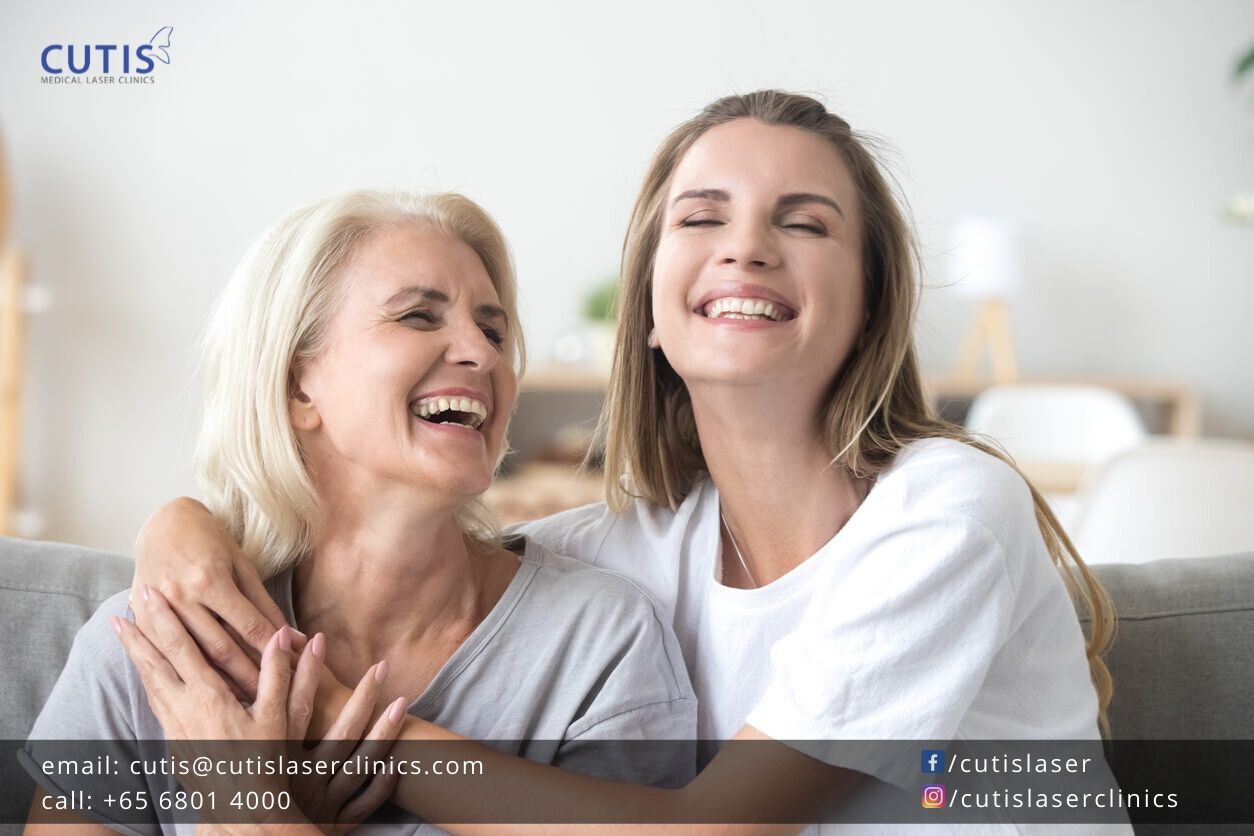 Fine lines and wrinkles don’t just appear in your 40s, 50s, or later years. While they are a lot more common in old age, they can happen in your 30s or even 20s. This can be frustrating, as these lines and creases can make you look older, tired, and angry, even when you’re not.
Fine lines and wrinkles don’t just appear in your 40s, 50s, or later years. While they are a lot more common in old age, they can happen in your 30s or even 20s. This can be frustrating, as these lines and creases can make you look older, tired, and angry, even when you’re not.
Why do fine lines and wrinkles appear?
The loss of essential skin proteins, collagen and elastin, are the main contributors to the appearance of fine lines and wrinkles. As the skin loses its ability to retain moisture (due to aging), it then becomes prone to the effects of gravity. These include lines, wrinkles, sags, bags, and folds.
Other factors can also contribute to wrinkles and speed up aging. These include:
- Sun exposure
- Repetitive facial expressions or muscle movements
- Sleeping patterns
- Smoking
When do wrinkles start popping up?
Most wrinkles are due to extrinsic aging or environmental factors. They are not hereditary but genetics play a role on how your skin ages. The time you start getting wrinkles is not necessarily dependent on your genes. You can, however, get a clue on when you may start getting them by looking at your parents.
In your 20s
After the age of 20, your skin starts to produce 1% less collagen every year. It is also during your 20s that the exfoliation process of the skin decreases by 28%. This only means that dead skin cells linger on your skin longer and will need more assistance in removing them.
You may also begin to see forehead lines, which is due to raising your eyebrows constantly. Lines related to expressions or movements may start to appear, including tiny lines around the eyes. This is especially true if you spend lots of time squinting at a screen or out in the sun.
In your 30s
During your mid-30s, your collagen production starts to decline. This is why you may start to notice lines becoming more prominent. This may be due to constant squinting and prolonged/unprotected sun exposure.
Crow’s feet or wrinkles in the corner of the eyes are common during this time. Some may also start seeing frown lines or lines between the eyebrows. The decline in collagen production can also lead to thinning skin and dull complexion.
In your 40s
Collagen loss accelerates during your 40s, with your lines getting deeper or more noticeable. You can also expect to see more lines and wrinkles around your eyes, on your forehead, and between your eyebrows.
During your 40s, your upper lip wrinkles or smile lines may also start to become more prominent, especially if you smoke. The effects of not applying sunscreen in your earlier years may also pop up in your 40s.
In your 50s and beyond
The cumulative effects of aging and sun damage can show up at this time. The skin also bruises easily at a later age, which is why wrinkles and dry skin are more common. The breakdown of collagen and elastin, furthermore, leads to more creases, as well as deeper lines and wrinkles.
Aging also causes your face to lose fat, which makes your skin thinner. The effects of gravity begins to kick in your 50s and 60s. This only makes it important to focus on skin tightening and anti-wrinkle treatments like Botulinum Toxin.
Fighting wrinkles
Botulinum toxin or Botulinum Toxin remains the most popular anti-wrinkle treatment. Botulinum Toxin is FDA-approved for treating or reducing the appearance of frown lines and forehead lines. You can also turn to this injectable for treating lines on the corner of the eyes and upper lip wrinkles or smoker’s lines.
Botulinum Toxin works by temporarily blocking the signal from a nerve to muscles. This paralyzes the muscles, which then softens and relaxes the wrinkles. It can take about two weeks to see the full results of Botulinum Toxin. These can last between three and six months or longer with repeated injections.
Take note: Be sure to look for a skilled injector or aesthetic doctor with a conservative approach in administering the treatment. This is to avoid unwanted side effects and achieve a natural look. Proper technique and right dosage can give you a well-rested look while maintaining facial mobility.
Schedule a consultation today
If you’re looking to ward off lines and wrinkles, don’t hesitate to consider Botulinum Toxin and other non-invasive skin tightening treatments. Contact Cutis Laser Clinics in Singapore today and book an appointment with our Harvard trained aesthetic doctor, Dr. Sylvia Ramirez, to find out if Botulinum Toxin is right for you.
- If you would like to be an informed patient, please contact us at +65-6801-4000 or
hello@cutislaserclinics.com. - Cutis Medical Laser Clinics, 9 Scotts Road Pacific Plaza, Scotts Medical Center #08-07, Singapore – 228210
+65-6801-4000 - hello@cutislaserclinics.com
